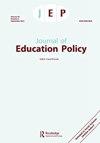Pacific inclusive education model: addressing dichotomies to ensure positive outcomes
IF 2.8
2区 教育学
Q1 EDUCATION & EDUCATIONAL RESEARCH
引用次数: 0
Abstract
ABSTRACT The United Nations Sustainable Development Goals (SDGs) offers a global blueprint to achieve a better and more sustainable future for every person, through universal action to address social, economic, and environmental inequity and inequality (United Nations Development Programme, 2021). For educators, SDG Goal 4 aims to ensure an equitable quality education that promotes lifelong learning opportunities and this goal has been endorsed by Pacific United Nations States in order to pave the road towards an inclusive education for all. We wish to argue, however, that attempting to meet global development goals for inclusive education is fundamentally problematic because of the nuances of the regions and contexts. For example, Pacific states, might better benefit from its own inclusive education trajectory that reflects individual contexts and understanding of distinct educational complexities. We propose the alignment of the global goals that positions local discourses of knowledge, values and understanding alongside inclusive education frameworks. The Pacific Disability Model offers a third space for disability discussions and actions that intersects global and local policy and practice binaries. By doing so, it is hoped that an inclusive approach to education can reach its potential for all, and particularly, students with disabilities in Pacific nations.太平洋全纳教育模式:解决两分法以确保积极成果
摘要联合国可持续发展目标提供了一个全球蓝图,通过普遍行动解决社会、经济和环境不平等和不平等问题,为每个人实现一个更美好、更可持续的未来(联合国开发计划署,2021)。对于教育工作者来说,可持续发展目标4旨在确保公平的优质教育,促进终身学习机会,这一目标已得到太平洋联合国国家的认可,为实现全民包容教育铺平道路。然而,我们想指出,由于区域和背景的细微差别,试图实现包容性教育的全球发展目标从根本上是有问题的。例如,太平洋国家可能会更好地受益于其自身的包容性教育轨迹,该轨迹反映了个人背景和对不同教育复杂性的理解。我们建议将全球目标与包容性教育框架相结合,将知识、价值观和理解的地方话语定位在一起。太平洋残疾模式为残疾问题讨论和行动提供了第三个空间,与全球和地方政策和实践的二元体系相交叉。通过这样做,希望包容性的教育方法能够为所有人,特别是太平洋国家的残疾学生发挥其潜力。
本文章由计算机程序翻译,如有差异,请以英文原文为准。
求助全文
约1分钟内获得全文
求助全文
来源期刊

Journal of Education Policy
EDUCATION & EDUCATIONAL RESEARCH-
CiteScore
8.10
自引率
8.00%
发文量
25
期刊介绍:
The Journal of Education Policy publishes original, critically and theoretically informed research that discusses, analyses and debates policymaking, policy implementation and the impact of policy at all levels and in all facets of formal and informal education. The journal is interested in analysis and theorisation of policy that is transposable, that has generic interest and relevance - national policy case studies would need to be conceptually and/or methodologically generalisable. The journal also publishes work that presents new methods of research and research studies that are experimental and innovative. The journal offers a forum for theoretical debate, as well as historical, philosophical and comparative studies, across different countries, contexts and levels of education. A valuable resource for academics, researchers, educators and policy makers, Journal of Education Policy provides rigorous and original insights into educational policy development, implications and global impact.
 求助内容:
求助内容: 应助结果提醒方式:
应助结果提醒方式:


